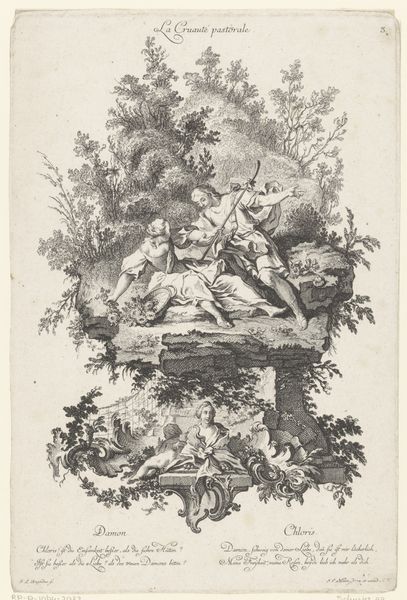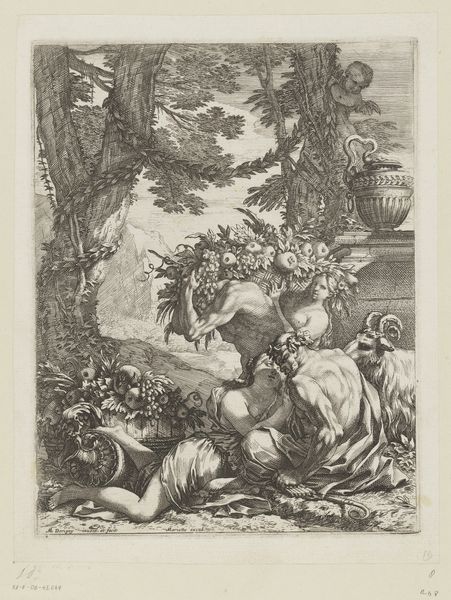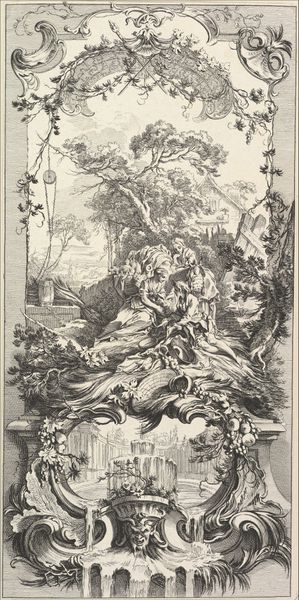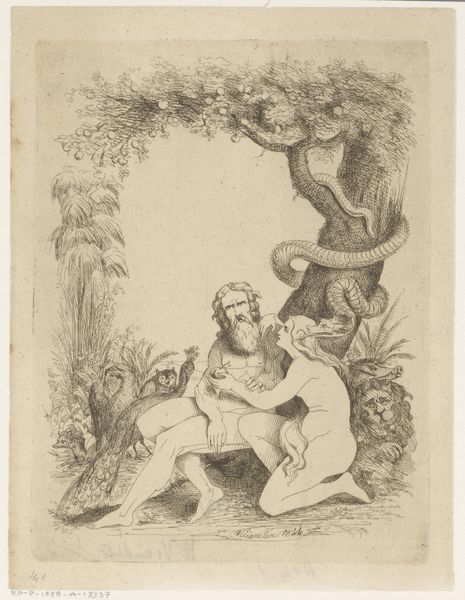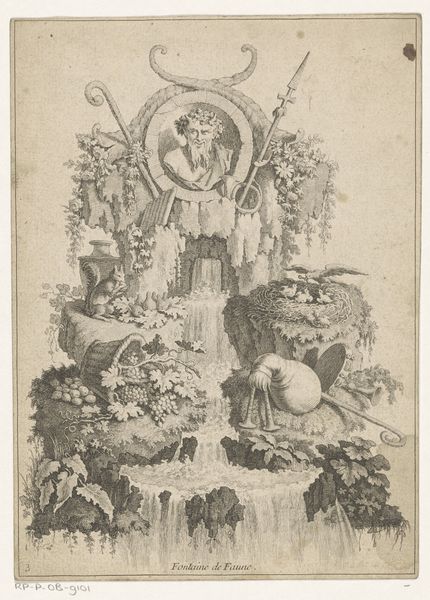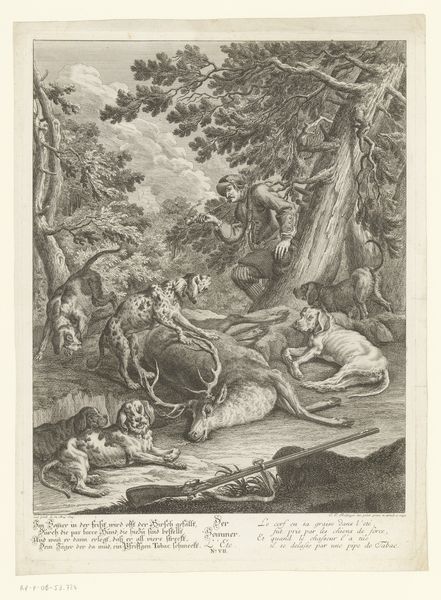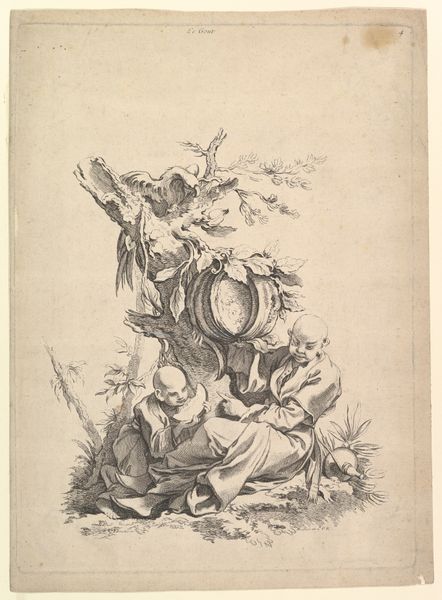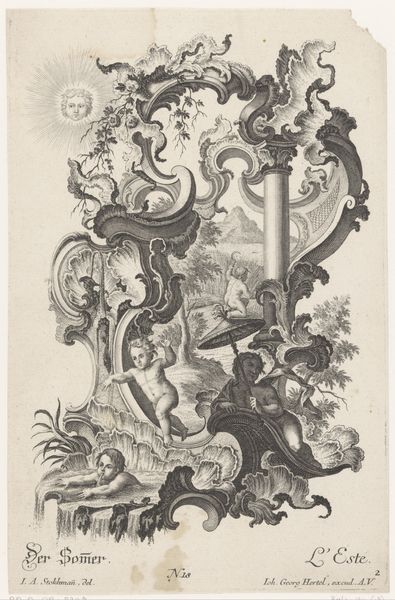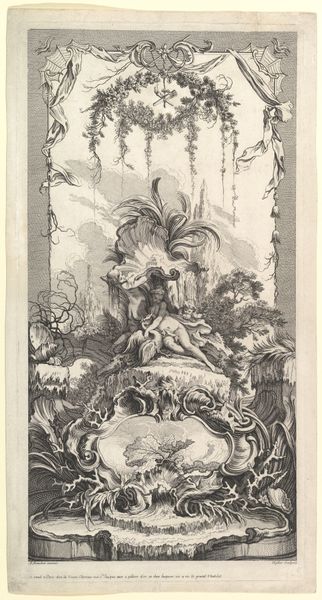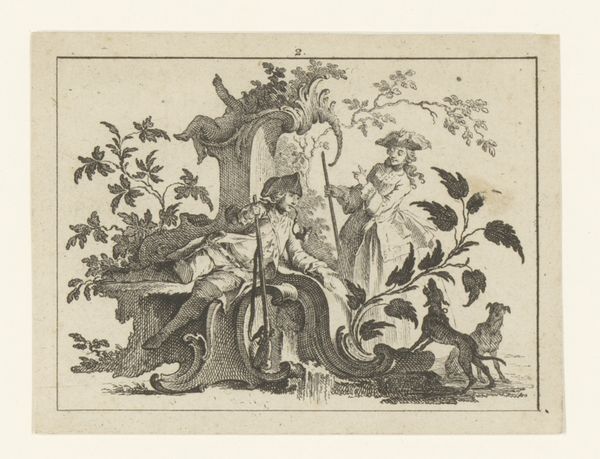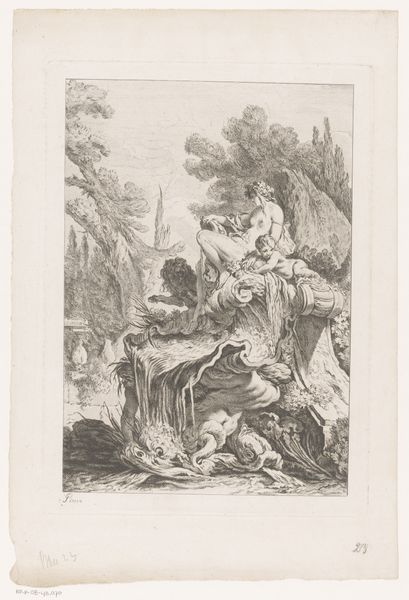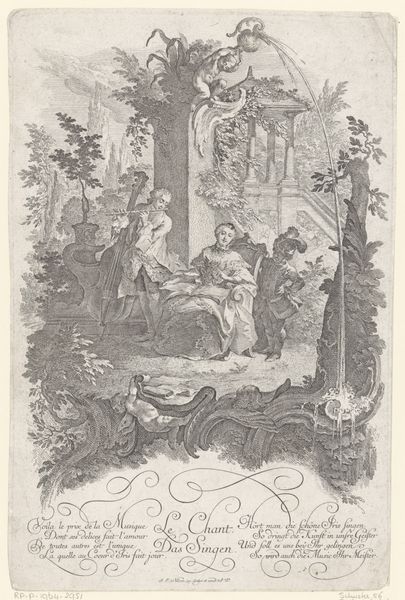
drawing, print, pencil, engraving
#
drawing
#
baroque
# print
#
pen sketch
#
pencil sketch
#
old engraving style
#
landscape
#
figuration
#
pencil
#
history-painting
#
engraving
Dimensions: height 288 mm, width 193 mm
Copyright: Rijks Museum: Open Domain
This print, Menalcas en Galatea, was made by Johann Georg Lorenz Rugendas around the 18th century using etching. Etching is an intaglio printmaking method in which a metal plate, usually copper or zinc, is covered with a waxy ground. The artist then scratches an image into the ground with a pointed tool, exposing the metal. The plate is then immersed in acid, which bites into the exposed lines, creating grooves. The ground is removed, ink is applied to the plate, and the surface is wiped clean, leaving ink only in the etched lines. Finally, damp paper is pressed against the plate, transferring the ink to create the print. The etching technique, facilitated by skilled labor, enabled the broad distribution of images and ideas, contributing to shifting social and cultural values. Rugendas' skilled manipulation of line and tone allowed him to create depth and atmosphere in his idyllic scene. The sharp precision of the etched lines allows for a high level of detail and clarity. Understanding the material and process helps us appreciate the artistry involved and its role in a wider culture of production and consumption.
Comments
No comments
Be the first to comment and join the conversation on the ultimate creative platform.
